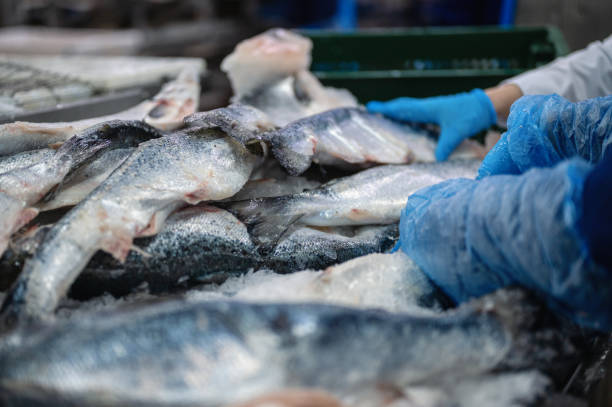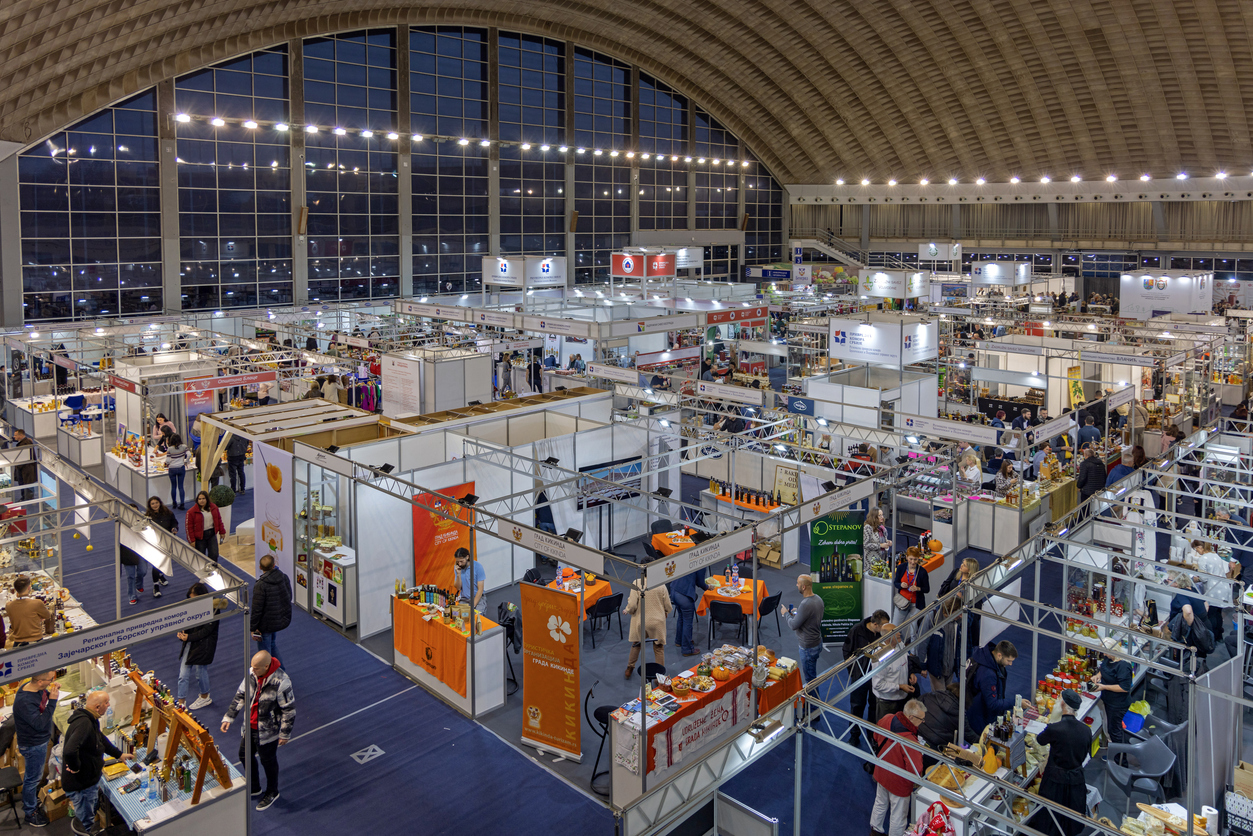The Battle of the Salmons: Comparing Chilean and Norwegian Salmon
The Battle of the Salmons: Comparing Chilean and Norwegian Salmon
Are you a seafood lover who can’t resist the succulent and flavorsome salmon? If so, get ready for an epic battle of the salmons! In one corner, we have the Chilean Salmon, renowned for its rich taste and vibrant color. And in the other corner, we have its Norwegian counterpart – famous for its pristine waters and firm texture. Join us as we dive into their diverse origins, unique farming practices, and distinct culinary profiles. It’s time to unravel the mystery behind these two titans of the oceanic world and discover which salmon reigns supreme on your dinner plate. Let’s settle “The Battle of the Salmons: Comparing Chilean and Norwegian Salmon” once and for all!
Introduction to Salmon as a Popular Fish
Salmon is one of the most popular and beloved fish around the world. It has a rich and complex history, deeply rooted in both cultural traditions and modern culinary preferences. Its distinctive flavor, delicate texture, and numerous health benefits have made it a staple ingredient in many cuisines.
The earliest records of salmon consumption date back to ancient times, with evidence found in archaeological sites along the coastlines of Northern Europe and North America. In these areas, indigenous communities have long relied on salmon as a primary food source due to its abundance in local rivers and lakes.
Over time, salmon became an important part of various cultures’ traditional diets. For example, in Norway, where it is believed that there are more than 400 different words for salmon across different dialects, this fish has been a significant contributor to their economy and way of life since Viking times.
In addition to its historical significance, salmon’s popularity can also be attributed to its unique taste profile. The combination of its rich flavor and subtle sweetness makes it a versatile ingredient that can be prepared in various ways – from raw sashimi dishes to smoked or grilled fillets.
Moreover, salmon is highly nutritious and offers numerous health benefits. It is an excellent source of protein and essential omega-3 fatty acids – nutrients that play a crucial role in heart health and brain function. These nutritional qualities have contributed to the growing demand for salmon worldwide.
History and Production of Chilean Salmon
History of Chilean Salmon:
The history of salmon cultivation in Chile can be traced back to the late 1970s, when the country’s government began promoting aquaculture as a way to diversify its economy and reduce dependency on traditional industries such as agriculture and mining. At that time, Norwegian companies like Marine Harvest and Cermaq were invited to invest in salmon farming in Chile.
The early years of salmon production in Chile were marked by a steep learning curve as the industry had to adapt to the unique environmental conditions of the country’s coastline. The cold waters, strong currents, and high tidal ranges presented significant challenges for salmon farming. However, with technological advancements and experience gained over time, Chilean salmon farmers were able to overcome these obstacles and establish a thriving industry.
Production Process:
Chilean salmon is primarily produced through open-net cage systems located in fjords along the southern coast. These cages are typically placed in sheltered areas with deep water and strong currents that help maintain good water quality for fish growth. The initial stage of production involves hatching eggs into fry at freshwater hatcheries. Once they reach a certain size, they are transferred to seawater pens where they continue their growth until reaching maturity.
History and Production of Norwegian Salmon
History and Production of Norwegian Salmon
Norway has a long and rich history when it comes to salmon production. The country is known for its pristine fjords, cold and clear waters, and strict regulations, all of which contribute to the high quality of Norwegian salmon.
The tradition of farming salmon in Norway can be traced back to the late 19th century when fish farming was first introduced as a means to provide food for local communities. However, it wasn’t until the 1960s that commercial salmon farming took off in Norway. This was largely due to advancements in technology and increasing demand for seafood around the world.
Today, Norway is one of the largest producers of farmed Atlantic salmon in the world. In fact, it accounts for over half of the global production with an annual output of around 1.3 million tons. The majority of this production comes from small-scale family-owned farms located along the coastlines and fjords.
One key factor that sets Norwegian salmon apart from other varieties is their strict regulations on farming practices. The Norwegian government has implemented stringent standards for aquaculture operations, ensuring sustainable practices and high-quality products. These regulations cover everything from site selection, feed composition, water quality control, disease prevention measures, and more.
Environmental Impact of Salmon Farming in Chile vs Norway
The environmental impact of salmon farming is a major concern in the aquaculture industry, as it has the potential to disrupt marine ecosystems and harm local wildlife. Chile and Norway are two of the largest producers of farmed salmon in the world, with Chile producing nearly 1 million tonnes annually and Norway producing over 1.3 million tonnes (2019 data). However, there are significant differences in their approaches to salmon farming and their resulting environmental impacts.
Chilean Salmon Farming:
Chile’s salmon farming industry began in the early 1980s and has since experienced rapid growth due to ideal climatic conditions for fish farming. The southern region of Chile provides cold, clear waters that are optimal for raising Atlantic salmon, which is the most commonly farmed species in Chile. However, this rapid growth has come at a cost to the environment.
One of the major environmental issues associated with Chilean salmon farming is sea lice infestations. These parasites attach themselves to fish and can cause severe health problems or even death. In order to combat this issue, farmers often use large amounts of chemicals such as pesticides and antibiotics. This not only harms surrounding marine life but also contributes to antibiotic resistance in bacteria.
Nutritional Differences between Chilean and Norwegian Salmon
When it comes to salmon, there are two countries that dominate the global market: Chile and Norway. Both have a long history of salmon farming and produce a large percentage of the world’s supply. However, there are significant differences between Chilean and Norwegian salmon, especially in terms of nutrition.
1. Feed
One of the most significant factors affecting the nutritional value of salmon is their feed. In Chilean farms, the majority of the feed consists of fishmeal and fish oil sourced from wild-caught fish like anchovies and sardines. This makes their diet higher in omega-3 fatty acids, which are essential for human health.
On the other hand, Norwegian farms use a diverse range of feed sources, including vegetable proteins such as soybeans and canola meal. While this helps reduce their reliance on wild-caught fish, it also results in a lower concentration of omega-3 fatty acids in their diet compared to Chilean salmon.
2. Omega-6 to Omega -3 Ratio
While both types of salmon contain high levels of omega-3 fatty acids, they differ significantly in their ratio with another essential fatty acid – omega-6. According to research by Food Chemistry journal (2017), Norwegian farmed salmon has an average omega-6 to omega-3 ratio ranging from 5:1 to 8:1. This means that they have more than five times as much omega-6 fats as omega-3 fats.
Taste and Texture Comparison
When it comes to choosing the best salmon for your dinner table, taste and texture are two important factors to consider. Both Chilean and Norwegian salmon are known for their high quality and sought-after in the seafood market. However, there are some distinct differences in taste and texture that set these two types of salmon apart. In this section, we will dive into a detailed comparison of the taste and texture of Chilean and Norwegian salmon.
Taste Comparison:
Chilean Salmon: The first thing you notice when biting into a piece of Chilean salmon is its rich, buttery flavor. This is due to the fish’s diet consisting mainly of small shrimp-like crustaceans called krill, which gives it a distinct sweet taste. Additionally, Chilean salmon is known for its mild flavor with subtle hints of ocean saltiness. It has a delicate balance of sweetness and savory flavors that make it very versatile in cooking.
Norwegian Salmon: On the other hand, Norwegian salmon tends to have a more pronounced ocean flavor compared to its Chilean counterpart. This is because Norwegian salmons feed on smaller fish such as herring or capelin, resulting in a slightly stronger fishy taste. However, this does not mean that Norwegian salmon lacks sweetness; it still has a pleasant hint of sweetness but with more depth than the milder-tasting Chilean salmon.
Cost Comparison
When it comes to salmon, two countries stand out as major producers: Chile and Norway. Both are known for their high-quality, sustainable farming practices and delicious salmon products. But if you’re trying to decide which one to purchase, you may be wondering about the cost differences between these two options.
In this section, we’ll break down the cost comparison between Chilean and Norwegian salmon so you can make an informed decision on which one is right for your budget.
1. Production Costs
One of the main factors that influence the cost of salmon is production costs. In this area, Chile has a clear advantage over Norway. Due to its warmer climate and favorable geographical conditions, Chilean salmon farmers have lower costs when it comes to feed, labor, and other inputs compared to their Norwegian counterparts.
This means that Chilean salmon can often be produced at a lower cost per pound than Norwegian salmon. This lower production cost can translate into a more affordable price for consumers.
2. Transportation Costs
Another factor that affects the overall cost of salmon is transportation. Since both countries are located far from major markets like Europe and North America, getting their products to those markets can be costly.
However, due to its location in South America, Chile has better access to shipping routes and ports than Norway does in Europe. This allows Chilean producers to transport their products more efficiently and at a lower cost compared to Norway.
Sustainability Practices of Chilean and Norwegian Salmon Industry
Sustainability has become a major concern in the global salmon industry as consumers are increasingly demanding ethically and environmentally responsible products. Chile and Norway are two of the largest producers of farmed salmon in the world, with Chile being the second-largest producer after Norway. Both countries have made significant efforts to improve their sustainability practices in the salmon industry, but they have taken different approaches.
Chilean Salmon Industry:
Chile has a long history of salmon farming, dating back to 1979 when Atlantic salmon was introduced to its waters. Today, Chile’s aquaculture industry is worth billions of dollars and accounts for thousands of jobs. However, this growth has come at a cost to the environment and local communities.
One of the main sustainability challenges faced by the Chilean salmon industry is the use of antibiotics and other chemicals to combat diseases that occur due to overcrowding in fish farms. Antibiotics used in fish feed can end up polluting surrounding waters and affecting marine life. In response to this issue, Chile has implemented stricter regulations on antibiotic usage in recent years. The country also requires all farms to obtain environmental permits before starting operations and regularly monitors water quality around fish farms.
Another significant challenge for Chile’s salmon industry is its high reliance on wild-caught fishmeal as feed for farmed fish. This practice not only depletes wild fish stocks but also contributes to overfishing. To address this issue, some companies have started using alternative protein sources such as plant-based feeds or insects.
Conclusion: Which Salmon Comes Out on Top?
After comparing and contrasting the various aspects of Chilean and Norwegian salmon, it is clear that both countries produce high-quality fish with their own unique characteristics. However, when it comes to choosing which salmon comes out on top, it ultimately depends on personal preferences and priorities.
For those who prioritize sustainability and ethical practices, Norwegian salmon may be the winner. Norway has strict regulations in place to ensure that their salmon farming does not harm the environment or wild fish populations. Their use of open-ocean net pens also allows for a more natural habitat for the fish compared to Chile’s closed containment system. Additionally, Norway’s strict antibiotic policies and lower use of chemical treatments make their salmon a healthier choice for consumers.
On the other hand, those who prioritize taste and texture may lean towards Chilean salmon. Due to its longer distance from market demand centers, Chilean salmon is often harvested at a larger size which results in a meatier texture. It also has a richer flavor due to being raised in colder waters with higher fat content. Furthermore, Chilean farmers have been able to perfect the art of selective breeding over many years resulting in consistently high-quality fish.
Another factor to consider when determining which salmon comes out on top is price. Due to its closer proximity to major markets such as the US and Europe, Norwegian salmon tends to be more expensive than Chilean salmon. This could be a deciding factor for budget-conscious consumers.








Comments are closed.